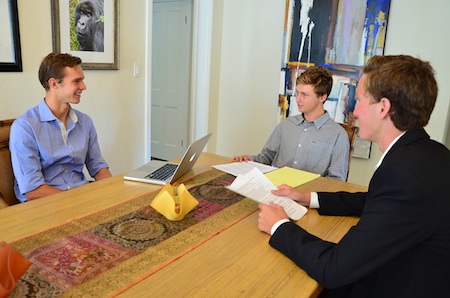
Since the Laguna Beach City Council in June directed its staff to hold talks with the public before resubmitting a revised Social Host Ordinance this fall, proponents and protesters have been hard at work, with the result that two draft measures were posted online this week, one from the police chief and another by student opponents.
Few disagree about the need to curb teen drinking, both because of the adverse effects of alcohol on adolescent brains, as well as the traumas that result from drinking and driving. Differences flare over whether an ordinance will prove an effective tool. Proponents believe that the ordinance will serve as a deterrent by limiting access to alcohol at parties.
Opponents, including the student group, believe that closing one avenue of access to alcohol will simply encourage teens to seek another less visible, supply channel. What’s more, they believe the added law’s unintended consequence might be an increased death toll by discouraging teens from calling 911 in an emergency for fear of repercussions.
A group led by graduating Laguna Beach High School senior Adam Redding-Kaufman provided the strongest opposition. Along with fellow senior Macklin Thornton, juniors Schuyler Vanderveen and Andrew Landsiedel joined Kaufman during the last school year in starting a Facebook page in opposition and staging a campus protest.
Throughout the summer, Kaufman and the others worked to draft their own complete ordinance, which calls for third-party research to substantiate the need for the measure altogether. They posted it to their Facebook page earlier this week, seeking comments from interested parties.
They plan to send a finalized version to police Chief Paul Workman and City Council members by the end of the month. “We are trying to gain momentum and not let this slip by under the radar,” said Kaufman, departing for Cal Poly, San Luis Obispo.
This week Workman also posted a proposed ordinance on the city’s website, including background research and legal information.
An informational meeting on the proposal is to be held Wednesday, Oct. 3, at 6 p.m. in Council Chambers. The public can e-mail suggestions about the ordinance to Workman at [email protected] until Oct. 16, and a new draft will be submitted to the City Council for a first reading at their Nov. 13 meeting.
The chief’s proposal directly responds to a number of concerns, including those from students. It states that the ordinance will not grant police additional powers to enter private property. It also confirms that absentee hosts will not be held responsible, since the ordinance will be “limited to persons on the premises who have knowledge that the underage person is consuming alcoholic beverages.”
The proposal dismisses other concerns raised by the students that the ordinance will discourage hosts from seeking help when needed. “While the persons making the statements likely believe them to be true, staff has been unable to find any supporting study or report to substantiate these beliefs,” the statement says.
The chief’s message outlines still unresolved policy questions that require a decision by the City Council, such as whether the host’s age matters in terms of culpability and whether a class should be offered in lieu of a fine for first-time offenders. The report supplies data about other California cities that have enacted SHOs and includes links to research on teen drinking.
The teen advocates remain opposed. “I believe this ordinance will further polarize the youth-adult relationship, will hurt the youth of the community, and will do nothing that other laws cannot do,” said Thornton, referencing the California Penal Code, which prohibits contributing to the delinquency of a minor, and the National Drinking Age Act of 1984.
Workman’s report also addresses what is omitted in existing statutes. “What does the SHO do that existing laws do not do?” he asks. The answer: it is a specific law that is easy to apply, as opposed to a broad law that can be difficult to enforce.
Thornton suggested that changing a double-standard prevalent within the community could also influence teen drinking. “It does not help that the adults in our community set a poor example: over-drinking at home, at Schoolpower events, and at the beach,” he said. “Parents need to start acting as positive examples for their children.”
The teens’ ordinance differs from Workman’s proposed ordinance on three key points. First, they suggest that research be done about the breadth of the problem locally through Evalcorp before enacting the ordinance. Such research should include data on alcohol related emergency visits, DUIs for persons ages 16 to 20, party report calls, and citations for supplying alcohol to minors since 2000. Students suggest repeating the research annually for the next three years.
Next, they maintain that the ordinance be in the form of a “sunset law” that will only be finalized at the end of three years of data collecting, if the data supports the need for the ordinance.
Finally, they include language to allow for amnesty for individuals, both minors and hosts, making 911 emergency calls, as granted by California Good Samaritan Laws.
Now that school has resumed, Landsiedel, who is the substitute secretary general of the Model United Nations class, sees potential in his new classmates. “It’s a great opportunity for the MUN class to deal with real world issues,” he said. For his part, Thornton said he hopes that the two remaining LBHS students involved, Landsiedel and Vanderveen, establish a club to continue the dialogue with school officials and and the community.




